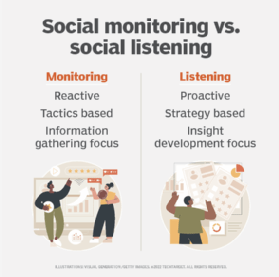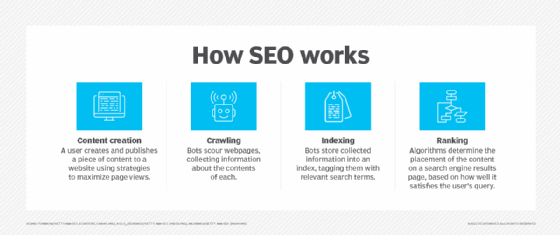What is brand recognition?
Brand recognition is the extent to which a consumer can correctly identify a particular product or service just by viewing the product or service's logo, tagline, packaging or advertising campaign. Brand recognition is a pivotal concept in the world of marketing and consumer behavior. A brand is said to have high recognition if it's easily and widely identifiable by these features alone.
In today's highly saturated, competitive market, brand recognition is more important than ever. Consumers are constantly bombarded with choices -- from local shops to multinational online marketplaces. Facing this overwhelming array of options, consumers often navigate toward brands they recognize and trust.
The importance of brand recognition
Brand recognition is crucial to a company's ability to attract and retain customers. It contributes significantly to building customer loyalty, providing a competitive advantage, and influencing purchasing decisions. The stronger the brand recognition, the more likely a consumer is to choose that brand over others, even in a crowded market space.
Moreover, in the age of social media and digital marketing, brand recognition can drastically increase a company's visibility and reach. When a brand is easily recognizable, it's more likely to be shared, liked and followed on social media platforms, expanding its potential audience and enhancing its market position.
In essence, brand recognition is not just about being known; it's about being known and remembered in a way that positively influences consumer perceptions and behaviors. Investing in brand recognition is foundational for businesses aiming for long-term success and growth in today's ever-evolving market landscape.
Studies have shown that brands with strong recognition can command higher prices and customer loyalty.
Let's now take a deeper look at those elements that aid in brand recognition.
Elements contributing to brand recognition
Creating strong brand recognition involves the consistent use of several key visual and auditory elements that customers associate with a company: logos, slogans, colors, sounds and overall design.
Logos
A logo is often the first thing that comes to mind when people think of a brand. It's a visual representation of the brand's identity, encapsulating its values, offerings and personality in a simple design. McDonald's golden arches and Nike's swoosh are instantly recognizable logos that signify these brands globally.
Slogans
A catchy, memorable slogan can significantly enhance brand recognition. Slogans often communicate a brand's unique selling proposition or brand essence in a concise, impactful way. Nike's "Just Do It" and McDonald's "I'm Lovin' It" are phrases that immediately bring their respective brands to mind.
Colors
Colors play a key role in brand recognition, as people tend to associate specific colors with certain brands. Coca-Cola's signature red and white or Tiffany & Co.'s distinctive Robin's egg blue are prime examples. Color association can be so strong that it often suffices to trigger brand recognition even without the brand name or logo.
Sounds
Sound branding, also known as audio branding or sonic branding, is a powerful tool for brand recognition. This could be a jingle, a particular sound effect or even a brand's unique voice in their commercials. The lion's roar at the start of old MGM movies and Intel's five-note bong are instantly recognizable audio cues linked to those brands.
Overall design
The overall design and aesthetic of a brand, including its packaging, website layout, font/typography, and imagery, also influence brand recognition. Apple's minimalist design aesthetic across its products, website and stores is a distinguishing feature of the brand.
Each of these elements, when used consistently and thoughtfully, works together to build a cohesive, recognizable brand identity. This identity allows customers to recognize a brand instantly, even in a crowded marketplace. This underscores the importance of these elements in enhancing brand recognition.
Brand recognition vs. brand awareness
It's important to differentiate brand recognition from a closely related marketing term: brand awareness. These terms are often used interchangeably but refer to different stages in the customer's knowledge of a brand.
Brand recognition is about a customer's ability to identify a brand's distinct attributes (such as logos, slogans or colors) without seeing the brand name. The focus is on memory retrieval and the customer's ability to recognize the brand when they encounter these elements.
Brand awareness is a broader concept that encompasses brand recognition but also includes understanding what the brand does, its products or services, and its reputation. It's about customer familiarity and knowledge of the brand.
The key difference in the terms is the depth of knowledge. While brand recognition requires the consumer to remember visual or auditory brand elements, brand awareness necessitates a deeper understanding of the brand, its offerings, and its market position.
Brand awareness is a necessary step toward achieving strong brand recognition.
Measuring brand recognition
Understanding the level of brand recognition can offer valuable insights and guide marketing strategy. It can help evaluate the effectiveness of branding efforts and identify areas that need improvement. Here are some ways companies typically measure brand recognition:

- Surveys. Whether conducted online or offline, surveys are a common, effective method for gauging brand recognition. Surveys typically involve showing participants brand elements (logo, color scheme or slogan) and asking if they recognize them. In addition, surveys can help businesses understand how well their brand stands out against competitors.
- Social listening. In the era of digital media, social listening has become invaluable. By monitoring social media platforms and online forums for mentions of a brand, or visual use of its logos and products, a business can get a sense of the brand's online recognition. Tools like Hootsuite, Brand24 or Mention can help automate this process.
- Brand recognition software. These specialized tools use AI and machine learning to measure brand recognition. They can analyze online images and videos to spot where and how often a brand is appearing, providing more in-depth data on brand visibility and recognition.
- Direct traffic analysis. By analyzing your website analytics, businesses can see how much of their web traffic comes from direct entries. A high percentage of users directly typing their website URL is a good indication of strong brand recognition.
- Market research. Traditional market research methods, like focus groups or interviews, can provide qualitative insights into brand recognition. These methods can reveal in-depth information about how and why consumers recognize and prefer certain brands.
By implementing these methods, companies can gather valuable data on their brand recognition. However, it's important to remember that brand recognition isn't static; it evolves with the brand, customers and the market. As such, measuring brand recognition should be a regular, ongoing part of brand strategy, allowing you to adapt and respond to changes effectively.
Regular monitoring and analysis of brand recognition metrics can significantly enhance a company's marketing strategies.
Strategies to improve brand recognition
Whether a brand is new or established, it should work continually on improving brand recognition. The following tactics can help preserve and improve brand recognition.
Maintain consistent branding
Logo, color scheme, typography, imagery and voice should remain consistent across all platforms and channels. Website, social media, advertisements, packaging and customer service communication should all clearly reflect a business’s brand identity.
Develop unique marketing campaigns
An out-of-the-box, memorable marketing campaign can significantly increase brand recognition. For example, the "Share a Coke" campaign replaced Coca-Cola's logo on cans with popular names, making the brand even more recognizable and personalized while inviting consumers to share their favorite beverage with others.
Be active on social media
Social media offers a powerful platform for building brand recognition. Regularly posting engaging content, interacting with audience, using influencers and employing features such as hashtags and stories can all enhance visibility and recognition.
Offer high-quality products and services
Ultimately, the most effective way to improve brand recognition is by offering high-quality products or services that meet or exceed customer expectations. This helps retain existing customers and encourages word-of-mouth recommendations, expanding your brand's reach and recognition.
Embrace community involvement
Getting involved in community events, sponsoring local teams or events, or partnering with complementary brands for joint campaigns can boost brand visibility and recognition. Cooperative marketing like that of Apple and Nike for the Apple Watch Nike+ edition can bolster recognition for both brands.
Apply search engine optimization
By optimizing its website and content for search engines, a business can improve online visibility, making it easier for customers to find and recognize its brand. This involves using relevant keywords, creating high-quality content and maintaining a responsive website design.

Implementing these strategies can help enhance brand recognition. But remember it's not an overnight process; it's a strategic, ongoing effort that can reap substantial rewards in the long run.
Let's end with a look at two brands that have achieved and sustained this.
Brand recognition in action
To truly understand the power of brand recognition, it can be helpful to study successful brands that have been in this arena. Here are case studies of two giants in their markets.
Apple
Apple enjoys extremely high brand recognition worldwide. Key strategies contributing to this include its minimalist logo, consistent design aesthetics across all products and marketing materials, and its innovative, high-quality products.
Apple's "Think Different" campaign, featuring influential figures from history, reinforced the company's ethos and further boosted its brand recognition. The result? As of 2023, Apple is one of the world's most valuable brands, with its products instantly recognizable even without the brand name present.
Starbucks
Starbucks has become synonymous with gourmet coffee, with strong brand recognition. The mermaid logo, the unique ambiance of its stores, and the consistent quality of its products all aid this recognition.
Starbucks' unique strategy of writing customer names on their coffee cups personalized the customer experience and simultaneously made its brand more visible whenever customers carried their cups outside the store. This move further boosted Starbucks' brand recognition and solidified its place in the global coffee industry.
These examples demonstrate how consistent, innovative branding and marketing strategies can effectively build strong brand recognition. The brands have become household names that set industry standards; brand recognition contributes greatly to their business success.
Understanding and implementing effective strategies for brand recognition can be a game-changer for businesses in today's competitive marketplace. Given its importance, it's no surprise that businesses invest significantly in strategies to boost brand recognition, aiming to stand out and leave a lasting impression on the minds of their customers.
See how relationship marketing works, its pros/cons and levels and explore 12 social media marketing tips to boost your business.







